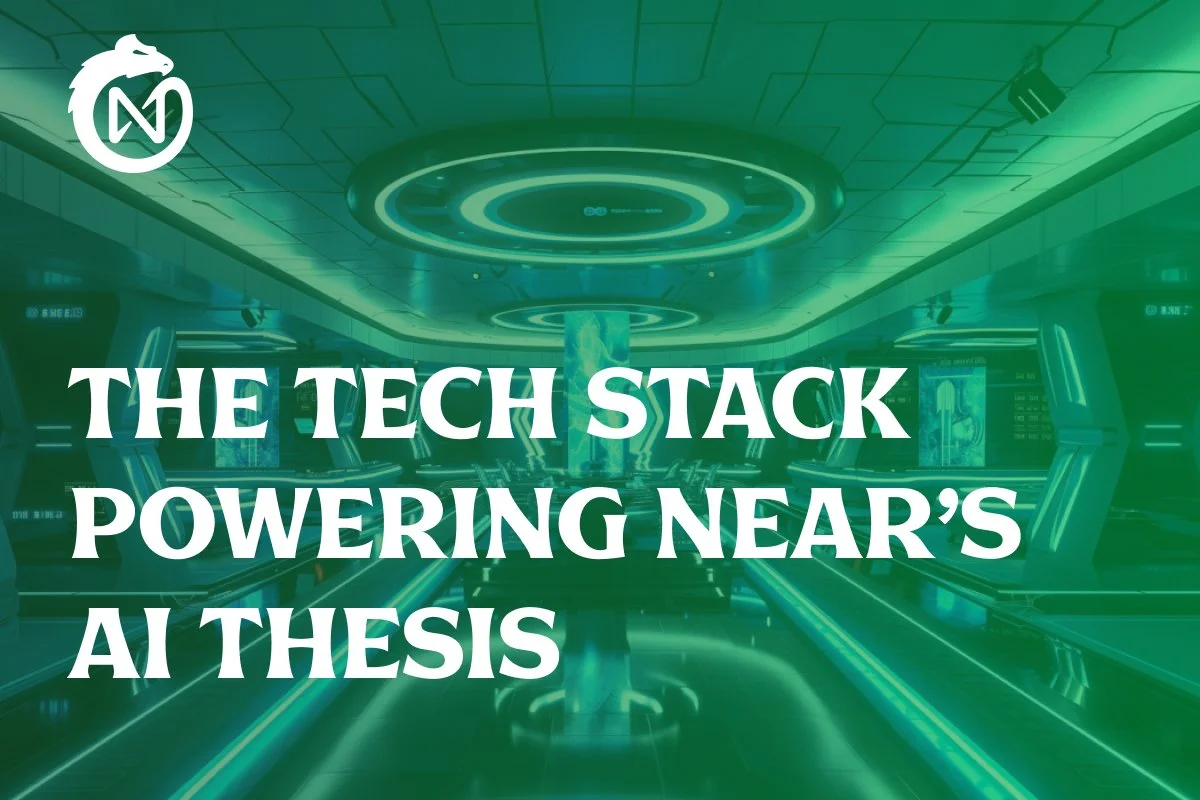The Tech Stack Powering NEAR’s AI Thesis
The promise of AI and Blockchain, remains largely unexplored - yet defining as future technologies of the next industrial revolution. Many see basic use cases for open and decentralized AI agents in the crossover with blockchains, crypto-economics, and the future of governance.
NEAR Protocol, as both an L1 and an multi-chain account logic, stands out as a defining ecosystem that has one of the strongest potentials to power the future of AI and blockchain. Exactly why, is explained below:
The NEAR Story: NEAR.AI Before NEAR.Protocol: To understand the thesis behind NEAR, you must first understand the origin of NEAR as an AI system. NEAR.AI was the original name given by Illia Polosukhin and Alex Skidanov (NEAR’s Founders) as they thought blockchain might help train up LLM data sets with better incentives. Illia has stated many times (one of those below) that all of NEAR Protocol over the last 4 years, has been designed to accommodate both the future of AI and the future of blockchain - at scale and most importantly, in a usable way.
NEAR pivoted from AI to blockchain in 2018 and is now coming full circle with user owned AI.
The NEAR Account Model: The first piece of technology that will help enable a world of on-chain LLMs, and blockchain monetized local AI agents, is the NEAR Account model. From the very beginning NEAR built the NEAR Account model to be extremely flexible: 1) Key rotation, 2) Top Level Account Names, 3) Sub Accounts (meaning multiple accounts beneath the main account), and different types of access keys (full, function-call limited, recovery, etc.) pretty much provide the parameters for a future where an AI agent can run its own account, interact with dApps, be managed by a human indirectly, or buy or sell AI agents through accounts. The NEAR Account model is also the defining logic that powers NEAR’s Chain Abstraction push - explained more below.
NEAR Accounts are named and can be controlled via access keys. They can be used to conduct transactions or hold contracts.
NEAR’s Sharded Blockchain: Nightshade, the NEAR consensus mechanism from 2020 was hailed as a pioneer of the ‘sharded blockchain’ model. Sharding, as the nightshade whitepaper explains, enables the infinite scalability of the NEAR blockchain in an affordable and timely manner. There are currently 6 shards live on NEAR, with more set to go live in the coming months to years. For AI, sharding guarantees AI Agent or LLM scaling capacity: whether this is from the user prompting side, or the data processing and output side, all current AI systems require a highly scalable blockchain to accommodate mainstream adoption.
Chain Aggregation and Abstraction: The final core technology powering the NEAR Technology stack, is known as ‘Chain Abstraction’. It’s a process comprising a number of technical features - MPC Nodes, Gas Relayers, and Remote NEAR Accounts, to allow any application or account on NEAR to ‘plug into’ any other blockchain in a fully permissionless and decentralized manner, such that the NEAR Account can manage that other chain-specific address, with all of the assets inside of it.
What this architecture enables is a design, by which any on-chain AI solution created on NEAR, can be exported and utilized across ANY blockchain or dApp of Web3 easily. Illia explains this vision more specifically below:
The takeaway here is 4 fold:
NEAR was designed as the foundation of decentralized AI, from day 1, when it was originally NEAR.AI.
The NEAR Account Model was created with usability for humans and AI in mind, from day 1, with a number of unique parameters and customizations.
NEAR is a sharded blockchain, capable of handling the expectedly high AI transaction load - infinitely and with no sacrifice to cost or time.
NEAR pioneers the Chain Abstraction logic - such that any future AI dApp on NEAR will be able to plug in and operate with any other blockchain-based dApp across all L1 and L2 ecosystems. True composability at its finest.






